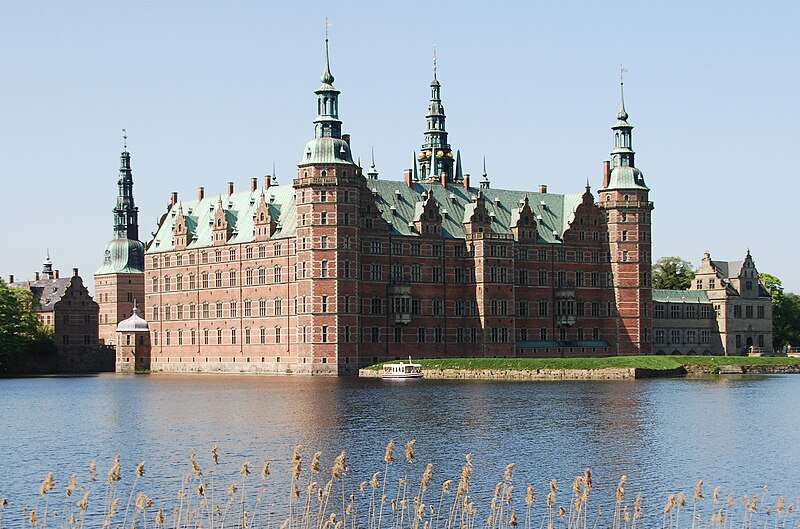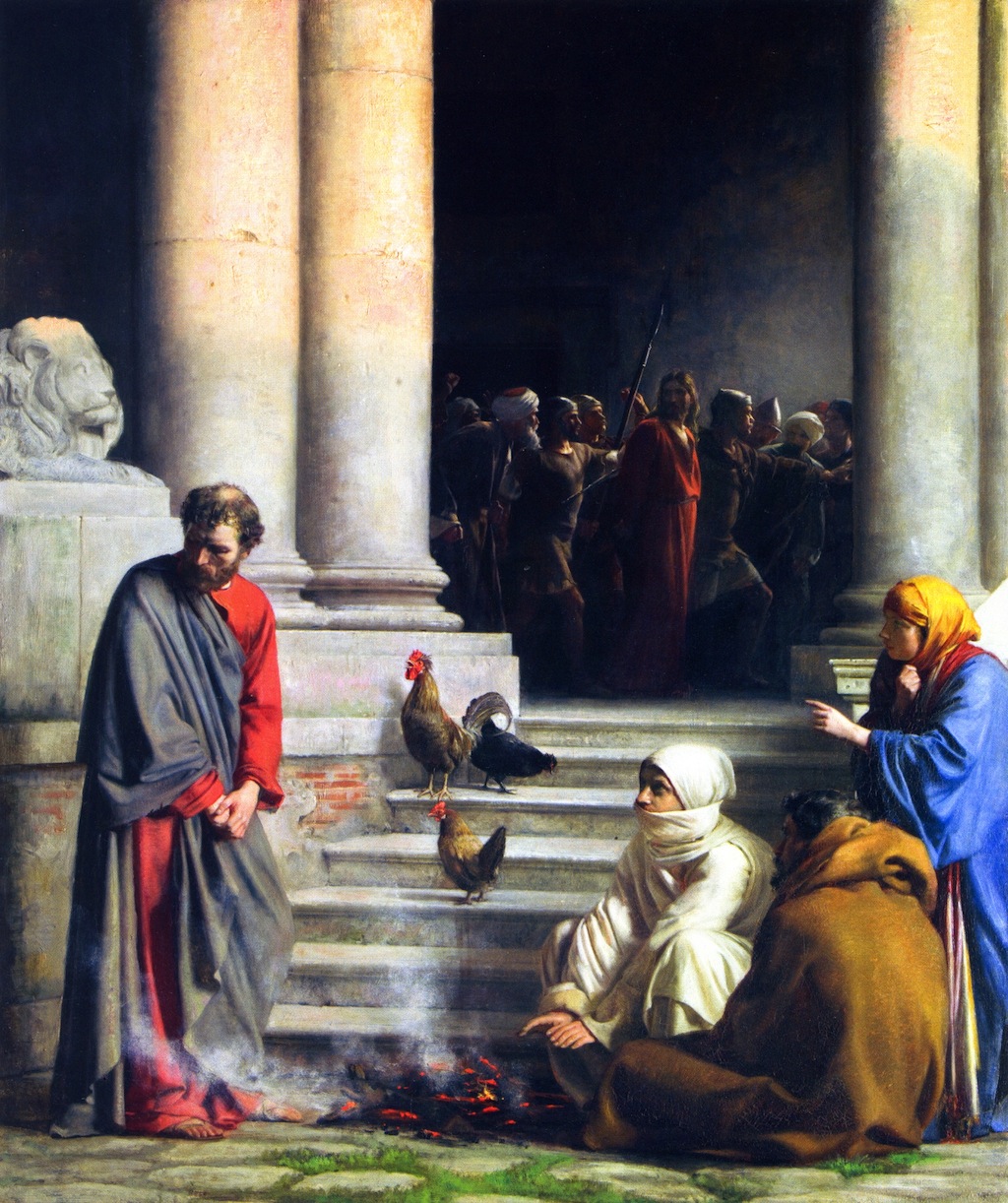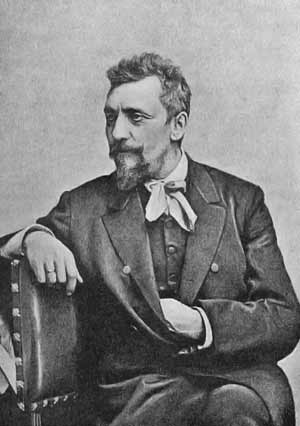Carl Heinrich Bloch
kjs on 27th May 2022
Carl Bloch was a Danish painter who lived between 1834 and 1890. His parents were Joergen Peter Bloch and Ida Emilie Ulrikke Henriette Weitzmann Bloch. Bloch was born one of the 10 children of his parents, in a middle-class family in Copenhagen. As a youth, he was preparing himself to be an officer in the navy but he soon found himself nursing a different kind of passion in life.
Bloch later married Alma Trepka during one of his study trips to Rome. He settled down there to lead a happy life with eight children until his wife’s early death in 1886.
Childhood and early career
The curator of BYU’s Bloch exhibition has stated that when, in a drawing class, Bloch excelled in drawing, the teacher gave him assignments more difficult than those given to other students. As a result, he ignored his studies so much that at the final exam for getting into the naval academy. He informed his parents that he wanted to become a professional painter and artist. His parents did not consider art a viable way to support a family.
With the path that he chose in his life, he became successful in immortalizing himself in the annals of art history.
After the death of Marstrand, he finished the decoration of the ceremonial hall at the University of Copenhagen. With the benefit of a travel grant that he received from the Danish academy in 1855, Bloch traveled extensively in search of newer pastures with scope for developing his painting skill, to neighboring Holland, France, and Italy with his best friend Anton Dorph.
Influence of Rome in his Paintings
He studied with Wilhelm Marstrand at the Danish Academy of Arts and his early works featured rural scenes from everyday life. From 1859 to 1866, Bloch lived in Italy and this period was crucial in his life as it provided him with a solid platform to develop his historical and biblical style of painting. He tasted his early success when he won a medal in 1853 for one of his drawings. He was quoted as having had the European touch in his painting that would, later on, help him shape up as an upcoming talent among the continent’s artistic community. He was considered one among the “Nationales” with Marstrand, Constantin Hansen, Roed, PC. Skovgaard, Sonne Dasgaard Kyhn who were all part of “the Eckhersberg-Tradition”.

The pinnacle of his success was the exhibition of his “Prometheus Unbound” or “The Liberation of Prometheus” in Copenhagen in 1865. It is said that people thronged the halls of the Royal Danish Academy to see this painting. It gave the war-beaten country a ray of hope. They began to see Denmark as Prometheus and their imminent rise as its true liberation. This painting instilled nationalism in the Danish population.
The Liberation of Prometheus measured 84 square feet and was commissioned by the 17-year-old King George I of Greece. According to Anne-Mette Gravgaard, an art historian and priest at Davids Kirke in Copenhagen, in a way, the young king saw himself as Prometheus, the Greek half-God who was set to liberate the Danes after their crushing defeat against Prussia only a few years earlier.
When the painting was completed and before it was unveiled in the royal palace in Greece, King George 1 sent this masterpiece to Copenhagen for exhibition to the masses.
Painting subjects
He was a great admirer of Rembrandt whose paintings greatly influenced Bloch’s own works. His use of light and dark tones influenced his own use of light in his later paintings. His partiality to the depiction of common people was influenced by Rembrandt’s paintings of common people.
Carl worked in Rome until 1865. Some of his best works are from this period of time and place where he was greatly influenced by the Italian masters. His work in the Italian genre made him popular. He became a household name during his stay in Italy.
Bloch’s Style of Painting
Carl’s etchings were the specialty that enabled him to gain mastery in the manipulation of light in his paintings. This was considered to be an area in the arena of painting that calls for specialization to achieve mastery where many painters fail but it was here that Carl excelled. He traveled frequently to the neighboring countries, especially to Italy. His artistic style bears the stamp of Italian religious paintings. The best part of his life from 1861 to 1890 was spent in search of excellence in art in major cities like Rome, Sorrento, Naples, Palestrina, Athens, and Firenze.
Mastery in Religious Subjects
According to the curator of the BYU Museum of Art exhibit Carl Bloch, some of his signature styles of painting bear the following salient features. In religious works, light emanating from the figure of Christ, exact proportions of the human figure, demonstrating Bloch’s rigorous artistic training, theatrical use of light and dark, learned from observing Rembrandt, the dramatic composition of sense, almost like a play on stage, the prominence of the supporting cast, such as the man in the red cap at the pool of Bethesda, inviting viewers to participate in the scene, one or more figures looking directly out at the viewer, giving the viewer the sense of standing inside the painting.
The fire at Frederiksborg Castle
In the winter of 1859, a fire raged through the halls of Frederiksborg Castle, the royal residence in Hillerød, Denmark. In the inner halls of the royal palace, 23 paintings based on the life of Christ were irreparably damaged. The Frederiksborg Castle was built as a residence for King Christian IV of Denmark-Norway. This palace became the largest Renaissance residence in Scandinavia. It is situated by a castle lake and a garden.

After the fire, the castle was rebuilt on the basis of old plans and with the help of the public and a brewer by name, J.C. Jacobson. Before the palace was replenished, J.C. Jacobson happened to visit the museum where The liberation of Prometheus was displayed. He was so enamored by the beauty of the painting that he commissioned Carl Bloch to replace all the 23 paintings destroyed in the fire.
The life of Christ paintings
It took Carl Bloch 14 years to finish his commission of the paintings that are today one of the most famous and well-known paintings of the religious genre. Although Bloch was not known to be very religious before the paintings, it was noted by some of his friends, that he later turned more pious. His belief and faith had grown stronger somewhat after the 14 years spent painting the life of Jesus.
He painted altarpieces for Danish and Swedish Lutheran church buildings. His paintings depicting Christ’s interaction with sick people, and children forced the parishioners to introspect their own faith and relationship with Christ. It is known that more than 160 churches have copies of his artwork to this date.
These paintings also improved his fame and income to a large extent. His popularity had reached great heights with the display of the Liberation of Prometheus. With the paintings of Christ, his fame, popularity, and wealth appeared to reach greater heights.
Influence in the Church of the Latter-Day Saints
Many paintings of Christ by Carl Bloch were purchased by the church of latter-day saints. His paintings and depictions of christ appear to have influenced the religious paintings of later days to a large extent. The church even produced firms depicting scriptural accounts of Christ’s public ministry, using Bloch’s paintings as models for the color, light, and overall set design, as well as the movement of the actors in many of the firms’ scenes.
Other genres
Many of Bloch’s paintings with historic significance decorate the walls of The National Historic Museum at Fredeksborg Castle today. One such painting is that of Christian IV visiting the bedside of Neils Kaas, the dying Chancellor, in order to receive the keys to the vault of Copenhagen Castle where the royal regalia was stored. Another painting that found a place on the walls of this museum was the depiction of the imprisonment of Christian II and his servant in the sealed tower at Soenderborg Castle.
Personality
Many of his friends recognized that he struggled with self-doubt at various stages of his career. On some occasions, he had voiced his depression to them. He was very famous and was made rich because of his talents. Yet, he appeared to struggle with coming to terms with his success. He believed he did not deserve it.
During the 1880s, his style f painting suddenly waned. The new artists rebelled against the old styles and were drawn toward Impressionism and Symbolism.
He served as a professor at the Royal Academy of Art and later its vice-director. He saw the exodus of new artists towards modernist Avante Garde styles as heresy to the long-held traditions of painting practiced by his own generation of artists. He was left a widower in 1886. He died of cancer on 22 Feb 1890.
Some of his notable works of art
Many of his famous works of art are religious paintings such as The Woman at the Well.
A few of his most noteworthy paintings are (1) The Resurrection, (2) Consolator (3) The Sermon on the Mount (4) Samson and the Philistines (5) Raising of Lazarus (6) In a Roman Osteria (7) The Daughter of Jairus (8) Christ and Child. The 23 paintings for the King’s Praying Chamber in Frederiksborg Castle Chapel made Carl Bloch the apparent choice for painting further such pieces. He also painted 8 altarpieces which are among his best paintings.
Fra et Romersk Osteria (In the Roman Osteria)
Italian Osteria Scene, Girl welcoming a Person entering, by Wilhelm Marstrand, Copenhagen – Stretched Canvas
Fra et romersk osteria (Roman Osteria), 1866 by Carl Bloch – Statens Museum Kunst – Stretched Canvas
‘In the Roman osteria‘ was commissioned by a good friend and supporter by Carl Bloch, Moritz G. Melchior, a merchant. Bloch finished the painting in 1866. Moritz is seen in the background of this painting, talking to one of his friends. One of the guests seated at the table with him is the painter himself, with his back to the viewer.
The primary characters in the painting, include village folk of the Danish countryside. Of the three figures seen seated at one table, the two women appear to engage with the viewer agreeably. The male patron seated at that table appears to glare at the viewer rather irritably. It is said that knives and forks are brandished freely. The cat, clothes, the osteria is depicted in striking realism, as is a common feature among Bloch’s paintings in this genre.
Bloch was well known and sought out by the clergy and royalty of the time for religious and somber paintings. However, he is today well known for his paintings depicting the common folk in amusing scenes such as the one in this painting. There are two other well-known interpretations of the Osteria scene, one by the master’s teacher Wilhelm Marstrand.
This painting, the Italian Osteria Scene from 1848 (Ny Carlsberg Glyptotek), also contains two girls inviting the viewer into the Osteria with one holding up a glass of wine. The other interpretation is that of a painting of Italian Osteria by Polish-Danish painter, Elisabeth Jerichau Baumann. There are apparently three known variations of that painting. This painting was one of the popular genres at the time, that depicted rural life. The painting was unframed and was purchased by the museum.
Samson on a treadmill (Samson_hos_filistrene), 1863 by Carl Bloch- Statens Museum Kunst – Stretched Canvas
Samson on a treadmill is a baroque-inspired painting with motifs from history and mythology. This is one of his many paintings based on religious and mythological subjects. The biblical story of Samson being forced to live the life of a slave after his capture by the Philistines is depicted in this masterpiece of art.
Maaneskin Hellebæk (Moonlight Hellebæk)
Carl Bloch’s Maaneskin Hellebæk – Carl Bloch – Stretched Canvas
This painting is a landscape by Carl Bloch. The scenery appears to be bathed in blue light. It shows a view of the full moon over water over Hellebæk, a place near Copenhagen, Denmark.
Two Girls Smiling
To Leende Piger (Two Smiling Girls) by Carl Bloch – Stretched Canvas
This painting shows two girls laughing. A thimble can be seen in the finger of one of the girls while the other appears to be telling a joke. The scene of light banter and merriment among common folk is in the ilk of his other well-known painting, <a href="https://cirtemmysart.com/product/fra_et_romersk_osteria-roman-osteria-staten-museum-kunst-stretched-canvas/">In a Roman Osteria</a>.
Christ and child
This quote from the excerpts taken from The Master’s Hand: The Art of Carl Heinrich Bloch explains succinctly the meaning of Christ’s love for his children. “Upon entering Sankt Nikolai Kirke, the magnificent figure of Christ and the shy young boy presents an image of pure majesty. Viewers cannot help but observe the loving, protective relationship as Christ affectionately puts His hand on the Child’s cheek and gestures toward him. Looking out at the viewer, Christ seems to issue an invitation to “become as a little child.”
Christ and Child by Carl Bloch – Premium Framed Vertical Poster
Carl Bloch paintings in Fredriksborg Castle
Twenty-three paintinDenial of Saint Peter by Carl Blochgs were commissioned by the royal family of Denmark. Carl Bloch painted these based on the life of Jesus Christ. Many of these beautiful paintings, about 18 of them, are now housed in the oratory of the church in the castle of Fredriksborg. The church of Latter-Day Saints or the commonly known Mormon church borrowed many of these paintings to be photographed and refurbished. The museum agreed to lend the paintings and these works of art were subsequently refurbished; colours were made more vivid, with more detail given to many of the paintings that had faded during their time in public display.

Denial of Saint Peter by Carl Bloch – One of the paintings in the castle of Fredriksborg castle church. Source: Wiki commons












